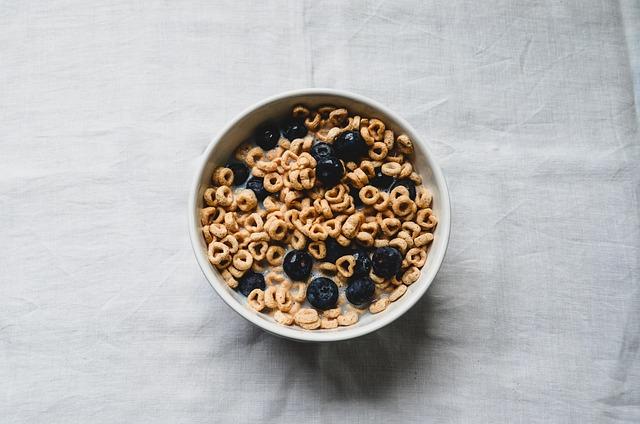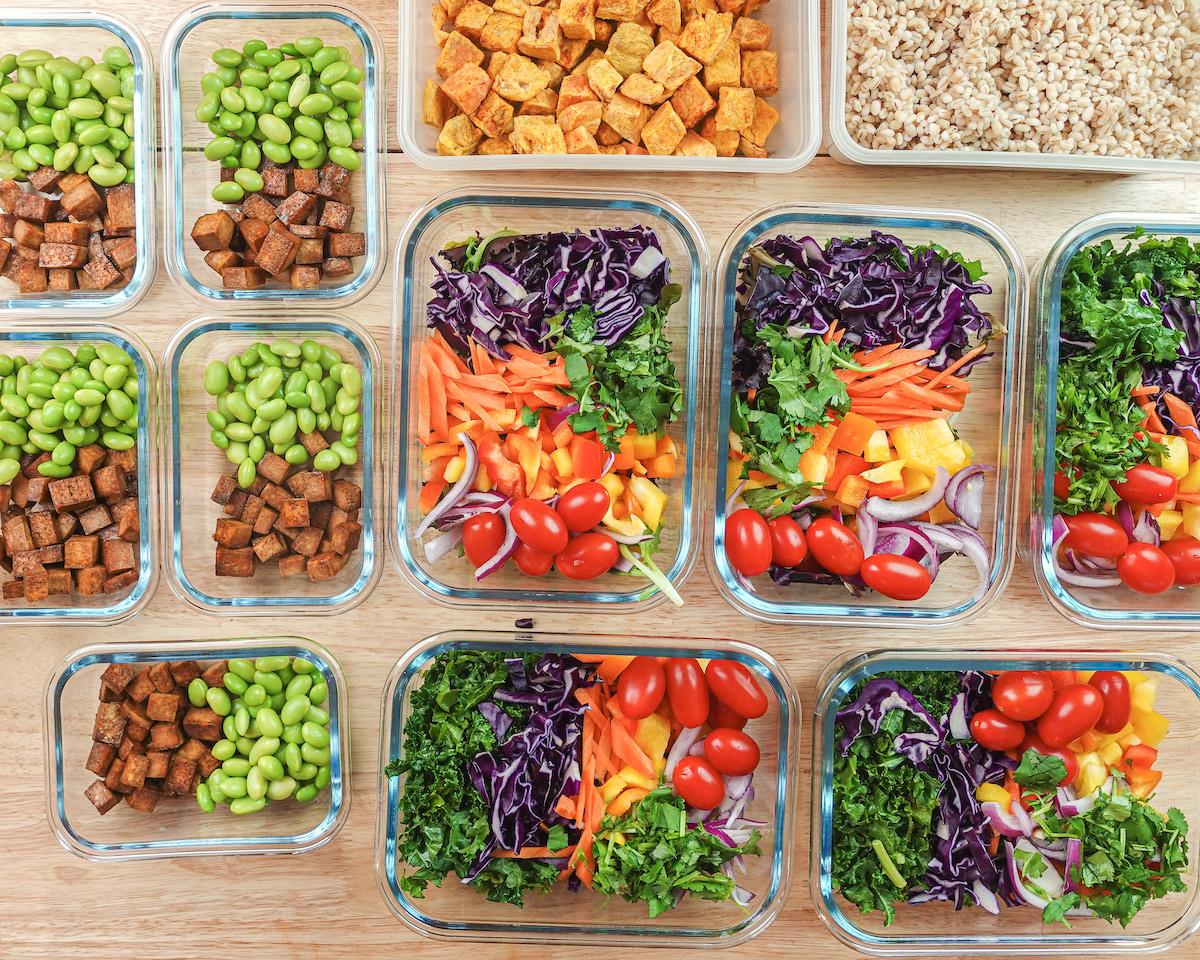Table of Contents
- Understanding the Student Budget and Its Challenges
- Nutritious Yet Affordable Staples for Your Pantry
- Quick and Easy Recipes That Wont Break the Bank
- Smart Shopping Tips to Maximize Your Food Budget
- Meal Prep Strategies for Students on a Tight Schedule
- Q&A
- To Wrap It Up


Understanding the Student Budget and Its Challenges
For students navigating the complexities of academic life, managing finances can often feel like a daunting task. As they juggle classes, assignments, and social activities, the budget can easily spiral out of control, leading to stress and anxiety. Understanding the nuances of a student budget is crucial, especially when it comes to vital areas like food. This is not just about stretching dollars further; it’s about making smart choices that align with their health and academic performance.
Students often encounter several challenges when trying to balance their nutritional needs with financial constraints. One key issue is the temptation of convenience foods, which can be more expensive in the long run and less healthy. Instead, focusing on a few budget-friendly food options can enhance both health and savings. Here are some tips to consider:
- Plan Meals Ahead: Creating a weekly meal plan helps prevent impulse buying and allows for bulk purchases of staples.
- Embrace Cooking: Preparing meals at home is often cheaper and healthier than eating out.
- Shop Smart: Utilizing local markets, discounts, and coupons can significantly reduce grocery bills.
To effectively visualize expenses, consider maintaining a simple table that outlines common food items and their estimated costs. This way, students can prioritize their spending and make necessary adjustments to their budgets:
| Food Item | Estimated Cost ($) |
|---|---|
| Rice (1 lb) | 1.50 |
| Whole Wheat Pasta (1 lb) | 2.00 |
| Frozen Vegetables (1 lb) | 2.50 |
| Canned Beans (15 oz) | 1.00 |
| Chicken Breast (1 lb) | 3.00 |
By staying aware of their surroundings and armed with knowledge about food costs, students can make better financial choices that allow them to eat healthily without overspending. Ultimately, understanding financial constraints is a vital step toward achieving a balanced and successful student life.


Nutritious Yet Affordable Staples for Your Pantry
When stocking your pantry on a budget, it’s crucial to choose ingredients that are not only affordable but also packed with nutrients. Start by including whole grains like brown rice, quinoa, and whole wheat pasta. These items serve as the foundation for many meals, providing essential carbohydrates and fiber. Additionally, they are versatile enough to pair with various proteins and vegetables, allowing you to create a multitude of dishes without breaking the bank.
Legumes, such as beans, lentils, and chickpeas, are another fantastic staple. They are rich in protein and fiber, making them perfect for keeping you full while also being kind to your wallet. Incorporating these into your meals can add both bulk and nutritional value. Try making hearty soups, stirring them into salads, or using them as a meat substitute in tacos or burritos. The possibilities are endless when it comes to preparing these pantry heroes.
Don’t forget about frozen fruits and vegetables! They are often less expensive than their fresh counterparts, yet they retain most of their nutritional value because they are picked and frozen at peak ripeness. Stocking up on frozen produce allows for easy smoothies, stir-fries, and side dishes without the worry of spoilage. To help you visualize your options, here’s a simple table of nutrient-rich staples you can include in your pantry:
| Staple | Nutritional Benefits | Suggested Use |
|---|---|---|
| Brown Rice | High in fiber, rich in vitamins | Base for bowls, stir-fries |
| Lentils | Protein-rich, heart-healthy | Soups, salads, veggie burgers |
| Chickpeas | High in protein and iron | Humus, salads, curries |
| Frozen Spinach | Rich in iron and vitamins A & C | Smoothies, omelets, pasta |
| Frozen Berries | High in antioxidants | Toppings for yogurt, smoothies |


Quick and Easy Recipes That Wont Break the Bank
Eating on a budget doesn’t mean sacrificing flavor or nutrition. With a few simple ingredients, you can whip up dishes that are both satisfying and wallet-friendly. For instance, rice is a staple that can form the base of countless meals. Pair it with beans for protein and add some frozen vegetables for a colorful, nutrient-packed option. Try this quick stir-fry:
- 1 cup cooked rice
- 1 can black beans, rinsed
- 1 cup frozen mixed vegetables
- 2 tablespoons soy sauce
Simply sauté the vegetables, mix in the rice and beans, flavor with soy sauce, and you have a delicious meal ready in under 15 minutes!
Another budget-friendly favorite is pasta, which can be the canvas for endless variations. One easy dish is garlic butter pasta. You only need a few ingredients, and the taste is exceptional:
- 1 package spaghetti
- 4 cloves garlic, minced
- 1/2 cup butter
- Salt and pepper to taste
- Chopped parsley (optional)
Cook the spaghetti, melt butter in a pan, and sauté garlic until fragrant. Toss the drained pasta in the garlic butter, season to taste, and finish with parsley for a touch of freshness.
Lastly, don’t overlook the power of eggs. They are incredibly versatile and packed with protein. A simple vegetable frittata can be made with whatever you have on hand:
- 4 eggs
- 1 cup diced vegetables (bell peppers, onions, spinach)
- 1/2 teaspoon salt
- 1/4 teaspoon pepper
Beat the eggs, add vegetables, season, and pour into an oven-safe skillet. Bake until set for a hearty meal that can be eaten for breakfast, lunch, or dinner. Enjoy these budget recipes that prioritize both taste and affordability!


Smart Shopping Tips to Maximize Your Food Budget
One of the key strategies to stretch your food budget is planning your meals effectively. Start by creating a weekly meal plan that incorporates ingredients that can be used in multiple dishes. This not only minimizes food waste but also helps you avoid spontaneous takes on costly convenience foods. To make the most of your planning:
- Write a shopping list before heading to the store. Stick to it to resist unplanned purchases.
- Take advantage of sales by planning your meals around items that are discounted that week.
- Use leftovers creatively. Transform last night’s dinner into tomorrow’s lunch with just a few tweaks.
Purchasing in bulk can be a significant money saver for students. Items like pasta, rice, beans, and frozen fruits and veggies often come at a lower price per serving when bought in larger quantities. Also, consider pooling resources with roommates or friends to buy bulk items that you can share. Look for local co-ops or discount stores where you can find good deals on bulk products. Here are some essentials to consider:
| Bulk Items | Average Cost per Unit |
|---|---|
| Rice (5 lbs) | $4.00 |
| Lentils (2 lbs) | $2.50 |
| Pasta (10 lbs) | $7.00 |
| Frozen Vegetables (2 lbs) | $3.00 |
Lastly, don’t overlook the power of seasonal and local produce. Not only does buying fruits and vegetables in season assure you freshness, but it also tends to be more affordable. Visit farmers’ markets or local produce stands for potentially lower prices than those at grocery stores. Another great tip is to incorporate meatless meals into your weekly schedule; legumes and grains can keep you full while being gentle on your wallet. Explore options like:
- Chickpea salad
- Vegetable stir-fry
- Bean chili


Meal Prep Strategies for Students on a Tight Schedule
Balancing academics and personal life can leave little time for cooking, but with strategic meal prep, you can maintain a healthy diet without breaking the bank. Start by dedicating just a few hours once a week to prepare your meals. This not only saves you time during the busy weekdays but also helps reduce impulse purchases from vending machines or fast food. Choose bulk cooking methods—batching meals that can be easily divided into portions and frozen for later use. Dishes like soups, stews, or casseroles are ideal for this purpose, as they maintain flavor and nutritional value when reheated.
Utilize a shopping list to keep your grocery trips efficient and budget-friendly. Focus on buying staples that can form the basis of multiple meals. For instance, consider ingredients like:
- Rice and quinoa
- Canned beans and lentils
- Seasonal vegetables
- Eggs and poultry
- Frozen fruits and vegetables
With these items on hand, you can easily mix and match to create satisfying meals without spreading your finances too thin.
| Meal Idea | Estimated Cost | Prep Time |
|---|---|---|
| Chili Con Carne | Approx. $5 | 60 min |
| Vegetable Stir Fry | Approx. $4 | 30 min |
| Quinoa Salad | Approx. $3 | 25 min |
make use of storage solutions that help keep your meals fresh and organized. Invest in a set of reusable containers; this not only reduces waste but also makes it easier to grab meals on the go. Label your meals with dates to track freshness. Also, consider applying the “Cook Once, Eat Twice” concept, where you make larger portions of your favorite recipes and enjoy them over multiple days. With these tips, you’ll find that meal prep can fit seamlessly into your student lifestyle while keeping your food budget in check.




0 Comments